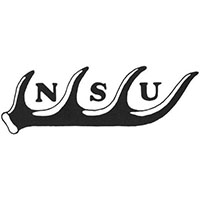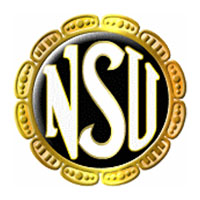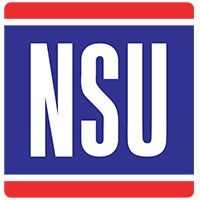
Early Days (1873-1900)
NSU (Fahrzeugwerke AG Neckarsulm) originated in 1873 as a bicycle manufacturer in Neckarsulm, Germany. Founded by Christian Schmidt and his partner, the company initially produced high-quality bicycles, gaining a reputation for innovation and craftsmanship. In 1892, NSU ventured into the automotive sector by developing its first motorized vehicle, a motorcycle, which set the stage for its future in the automotive industry.
Transition to Automobile Manufacturing (1900-1920)
By the turn of the 20th century, NSU began producing cars. The first automobile, the NSU Type A, was introduced in 1901, featuring a simple design and a 5-horsepower engine. The company quickly expanded its lineup, with models like the NSU Type 8 and the Type 12 gaining popularity. NSU cars were known for their reliability and performance.
During World War I, NSU shifted its focus to producing military vehicles and components. After the war, the company faced challenges in the post-war economy but successfully resumed car production with models such as the NSU 4 HP.
The Interwar Period (1920-1939)
The 1920s and 1930s marked a period of innovation for NSU. The company introduced the NSU 7/34 in 1925, which was well-received for its advanced engineering and design. In 1930, NSU adopted the “D” model, known for its streamlined design and improved aerodynamics.
In 1931, NSU unveiled the world’s first mass-produced vehicle with a front-wheel drive system, the NSU Type 501. However, financial difficulties led to a merger with the Audi company in 1932, creating a larger automotive group.
Post-War Revival (1945-1960)
After World War II, NSU faced significant challenges in rebuilding. The company re-entered the automotive market with the NSU Prinz in 1957, a small car that became highly popular. This compact design reflected the growing demand for economical vehicles in post-war Germany.
The NSU Wankel Spider, launched in 1964, was revolutionary, featuring the Wankel rotary engine, which offered a lightweight alternative to conventional piston engines. This innovative model helped establish NSU as a forward-thinking manufacturer in the automotive industry.
Expansion and Challenges (1960-1970)
The 1960s were a period of growth for NSU. The company continued to develop the Wankel engine, introducing models like the NSU Ro 80 in 1967. The Ro 80 was praised for its sleek design, advanced engineering, and smooth performance, winning the European Car of the Year award.
Despite its innovations, NSU faced financial difficulties due to production challenges and quality issues with the Wankel engine. By the early 1970s, the company struggled to compete with larger automakers, leading to a decline in sales.
The End of NSU (1970-1984)
In 1970, NSU was acquired by the Volkswagen Group, which aimed to integrate NSU’s technologies and expertise into its operations. The NSU brand continued to exist but was ultimately absorbed into the Audi brand.
The last NSU model, the NSU TT, was produced in the early 1970s. By 1984, the NSU name was officially retired as Volkswagen consolidated its brands, marking the end of an era for the historic manufacturer.
Legacy and Impact
NSU’s legacy lies in its pioneering spirit and commitment to innovation. The company played a significant role in the development of rotary engines and compact cars, influencing the automotive landscape in Germany and beyond. Today, the NSU brand is remembered for its engineering achievements and contributions to the automotive industry, with a rich history that continues to inspire car enthusiasts and manufacturers alike.
NSU cars are still celebrated for their unique designs and engineering, particularly among collectors and automotive historians, reflecting the brand’s lasting impact on the world of automobiles.








